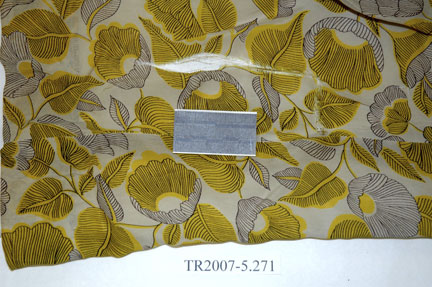A stitch in time saves Rosa Parks’ dress
On Dec. 1, 1955, in Montgomery, Ala., Rosa Parks was riding a public bus and thinking about finishing a new dress. A professional seamstress, Parks was sewing a dress for herself this time. Her thoughts were interrupted by an order, and her refusal, to relinquish her seat on the segregated bus. That refusal and her subsequent arrest led to the famous 382-day-long Montgomery bus boycott and became an important symbol of the modern Civil Rights Movement.
Now the dress she made itself will become an icon of the new National Museum for African American History and Culture. The delicate rayon georgette print dress was acquired by NMAAHC in 2007 as part of the collection of the Black Fashion Museum, of Washington, D.C. By the time it arrived at the Museum Conservation Institute for conservation, it had acquired numerous small but disfiguring tears.
Under the guidance of MCI’s senior textile conservator, Mary Ballard, conservation interns repaired the tears using dyed chiffon and a fine silk thread called ‘hair silk’, also dyed to match, in a couching stitch to follow the grain of the weave. Following a careful regime of anoxic pest-control treatment, cleaning, photography, accessioning, repair and re-housing, the dress is now fit for exhibition.
Rosa Parks’ dress is one of the BMF’s estimated 700 garments, 150 hats, 100 pairs of shoes, 50 handbags and nearly 60 boxes of photographs, files and ephemera. BFM’s collection was founded in 1979 by Lois K. Alexander-Lane with a mission to collect costumes of American designers of color, and later included costumes worn by well-known African Americans or in theatrical productions with African American casts. MCI in a partnership with NMAAHC is providing conservation and scientific analysis for this major acquisition. The project’s goal is to preserve BFM’s priceless costumes, and to reestablish this collection as an accessible, researchable entity that is a unique asset to NMAAHC and the Smithsonian Institution. In the process, MCI conservators are providing training to the museum’s growing staff in conserving and studying this important collection.
Posted: 1 March 2010







